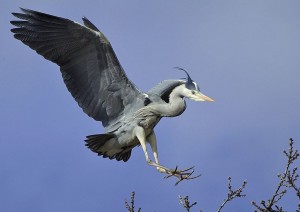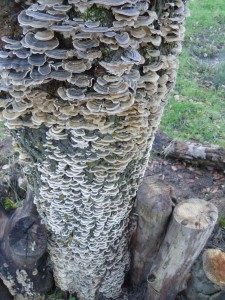Wildlife reserve update
February wildlife reserve update from reserve manager John Gowland...
The grey heron colony – voted one of the UK’s best by Countryfile magazine in 2012 – has begun to return to Wader Lake.

The birds are in full breeding plumage and you can hear their beak-clapping courtship display from the hides overlooking the lake. At the last count, 17 nests were occupied with at least three pairs incubating eggs.
Curlew numbers have fluctuated between 200 and 500 this winter; a little down on recent years but with plenty of flooded fields locally, it is no surprise that numbers are low on site. Amazingly on the evening of 12January I was privileged to see 1,220 roosting on Wader Lake, an incredible sight and all the more amazing because the night before, there was only one lone curlew roosting!
Another recent bird highlight was a long-eared owl flying over Wader Lake around mid-afternoon before landing in the heron hedge. As this bird is usually active at night, we think it was probably disturbed from its usual roosting area.
The first oystercatchers of the year have arrived back, just days after we added 20 tonnes of gravel on the shingle shore of the lake and Tern Island. It seemed as if they were inspecting the job - so hopefully they like what they see and nest on the newly-refurbished habitat.
Hawthorn Wood wild bird feeding station is being topped up daily with a mix of seeds, peanuts and bird cake; which has been a hit with the birds as they are flocking to the feeders.

Hollowood is looking fantastic right now, with a layer of fresh wood chipping and some fungi logs, which have been placed near the new woodland glade pond and are living up to their name.
The wildlife ponds have a newly-laid wood chipping path, which visitors can use to walk right around the area. We have also created two view points at the amphibian pond and dragonfly pond, allowing visitors great views of the River Wear and surrounding area.
A section of the river reedbed has been cut to maintain a healthy reedbed system and water flow. If left unmanaged; scrub, bramble and eventual woodland succession would take over and the reedbed would be lost, along with its wildlife.
While cutting the reed I decided to create four bittern pools, which involves cutting a 3m circle in the reedbed, providing birds like the bittern and water rail an open pool surrounded by reeds in which they feel safe to roost and hunt.



